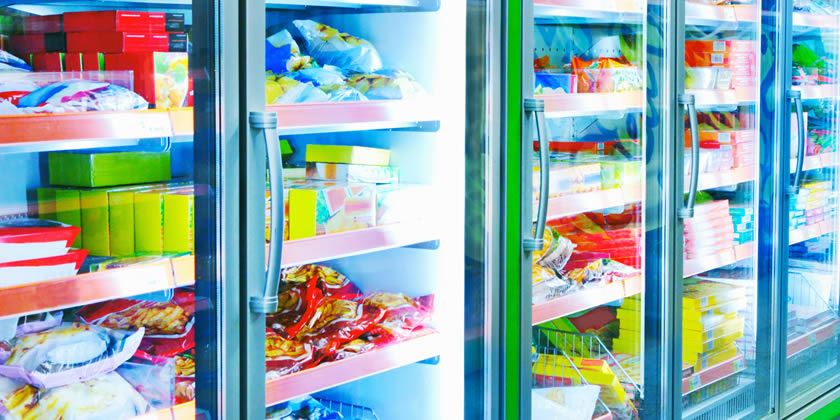Frozen Food from the Nutritional Point of View

Freezing food as a method of preservation ensures quality and food safety standards are observed while preserving both food’s flavor and nutritional value. The wider range of frozen goods available in the market today also provides convenience and variety. In a family where one or more people suffer from a celiac disease, both parents work outside the home, or a celiac lives on their own, it becomes increasingly difficult to regularly enjoy nutritious, balanced, and varied meals. Variety, after all, is not just the spice of life but it’s also essential when it comes to good nutrition.
With the ever-growing range of frozen dinners you can now enjoy some traditional dishes which, until only recently, were solely found at restaurants or as part of traditional homemade cuisine. (I’d remove the following as celiacs know the dangers of eating outàalbeit still a far shot from meeting celiacs’ strict requirements). A stark contrast to the frozen meals of days past (<--I’ve just moved this sentence), modern frozen foods offer organic ingredients naturally preserved in subzero temperatures. Diners can finally enjoy an array of meals throughout the week, without making sacrifices when it comes to quality. (I’d delete the followingàpromoting a significant reduction in food waste)
The Nutrient Content of Frozen Foods
Frozen meals can be an excellent source of nutrients for people of all ages and with various dietary needs and/or restrictions, including celiac disease.
The vitamin and mineral content of frozen foods is comparable to the nutrient profile of their freshly-made counterparts. Freezing as a method of food preservation guarantees product freshness as only a few hours pass from the moment the product is harvested and prepared to when it is flash-frozen.
Finally, freezing food at sub-zero temperatures allows for all natural ingredients to remain virtually intact with no artificial additives added to preserve the freshness.
Flash freezing has been demonstrated to be the most efficient method when preserving nutritional properties of food. This method also provides access to seasonal foods that would not be available otherwise. The freezing process, in some cases, may even increase nutrient content of some foods, since flash-freezing transforms certain pro-vitamins into vitamins or boosts their active components.
Nutrient content found in frozen foods is essentially identical to that of their "fresh" counterparts. And “fresh” is not always the freshest. Fresh foods may lose some of their nutritional value while in transit due to some nutrients’ sensitivity to the elements, as it is the case with vitamin C.
According to research conducted by the National Research Institute for Food and Nutrition, after 3 days at room temperature, artichokes lose 30% of their natural vitamin C content, while asparagus and broccoli undergo reductions of 80%, with spinach reaching losses of 75% in just 2 days.
In summary, no mineral content is lost, carbohydrate content remains stable, the digestibility of protein may be even improved and fat content remains fairly stable as well.
The Nutrient Content of Frozen Foods
Frozen meals can be an excellent source of nutrients for people of all ages and with various dietary needs and/or restrictions, including celiac disease.
The vitamin and mineral content of frozen foods is comparable to the nutrient profile of their freshly-made counterparts. Freezing as a method of food preservation guarantees product freshness as only a few hours pass from the moment the product is harvested and prepared to when it is flash-frozen.
Finally, freezing food at sub-zero temperatures allows for all natural ingredients to remain virtually intact with no artificial additives added to preserve the freshness.
Flash freezing has been demonstrated to be the most efficient method when preserving nutritional properties of food. This method also provides access to seasonal foods that would not be available otherwise. The freezing process, in some cases, may even increase nutrient content of some foods, since flash-freezing transforms certain pro-vitamins into vitamins or boosts their active components.
Nutrient content found in frozen foods is essentially identical to that of their "fresh" counterparts. And “fresh” is not always the freshest. Fresh foods may lose some of their nutritional value while in transit due to some nutrients’ sensitivity to the elements, as it is the case with vitamin C.
According to research conducted by the National Research Institute for Food and Nutrition, after 3 days at room temperature, artichokes lose 30% of their natural vitamin C content, while asparagus and broccoli undergo reductions of 80%, with spinach reaching losses of 75% in just 2 days.
In summary, no mineral content is lost, carbohydrate content remains stable, the digestibility of protein may be even improved and fat content remains fairly stable as well.
www.drschaer-institute.com
